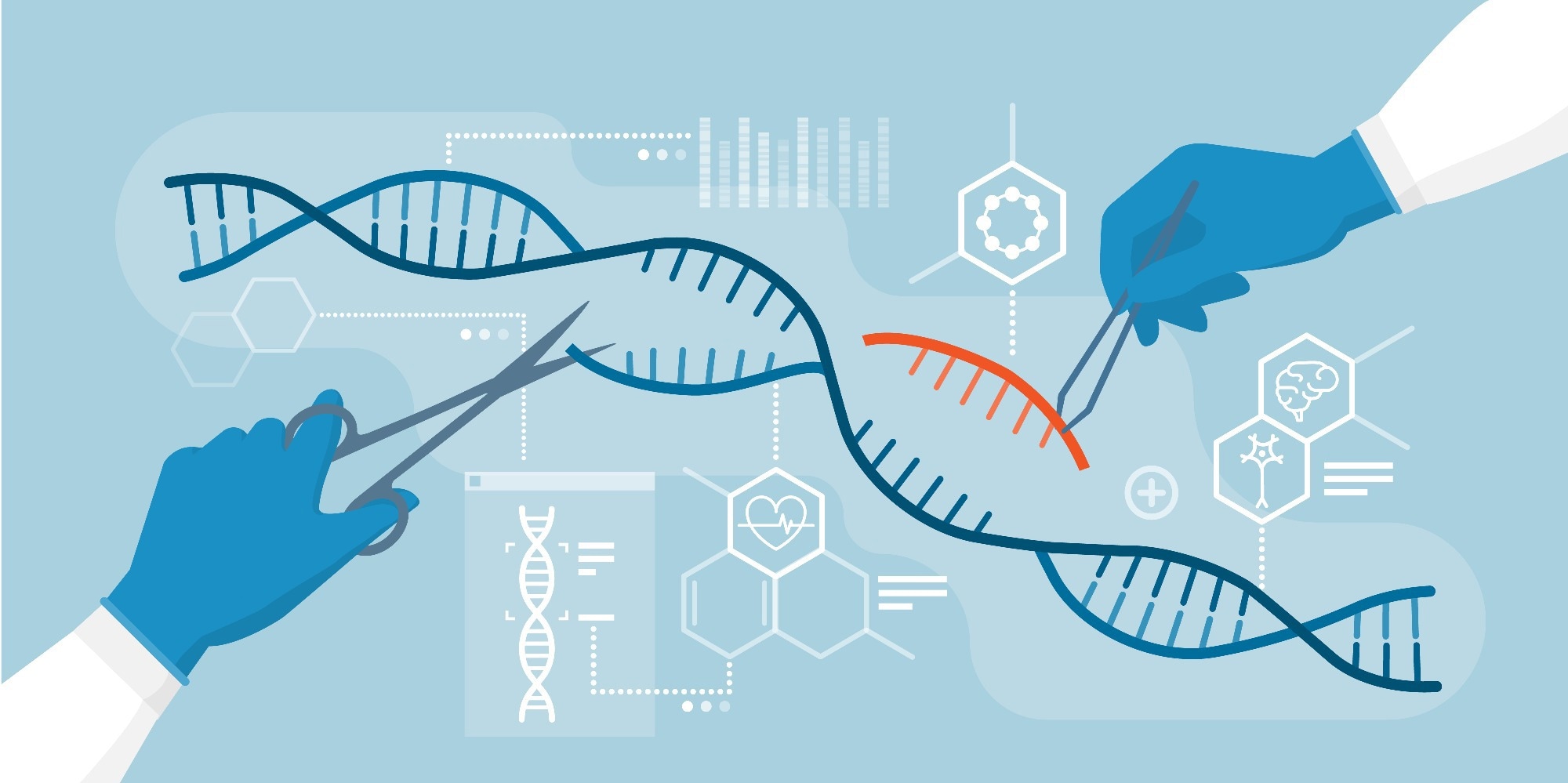Genome editing technologies have enormous potential for treating genetic diseases. Techniques like the extensively used CRISPR/Cas9 gene scissors target the source of the disease directly in the DNA. The scissors are used in the lab to examine biological processes and make targeted changes to genetic material in cell lines and model organisms.

Image Credit: elenabsl/Shutterstock.com
Prime editing is a development of the classic CRISPR/Cas9 technique. Prime editing, as opposed to conventional gene scissors, which cause a break in both strands of the DNA molecule, cuts and repairs DNA on a single strand only.
The prime editing guide RNA (pegRNA) accurately selects the required site in the genome and supplies the new genetic information, which is subsequently transcribed and inserted into the genome by a “translation enzyme” and incorporated into the DNA.
Finding the most efficient DNA repair options
Prime editing has the potential to be an effective means of addressing disease-causing mutations in patients’ genomes. However, when it comes to successfully applying it, it is critical to limit unexpected side effects like errors in DNA correction or DNA change elsewhere in the genome. According to preliminary research, prime editing results in much fewer unwanted modifications than traditional CRISPR/Cas9 techniques.
However, researchers must still spend considerable work tailoring the pegRNA for a specific target in the genome.
There are over 200 repair possibilities per mutation. In theory, we would have to test every single design option each time to find the most efficient and accurate pegRNA.”
Gerald Schwank, Professor, Institute of Pharmacology and Toxicology, University of Zurich
Analyzing a large data set with AI
Schwank and his research team required a simpler solution. They devised a method to estimate the efficiency of pegRNAs in collaboration with Michael Krauthammer, UZH Professor in the Department of Quantitative Biomedicine, and his group.
They were able to develop a comprehensive prime editing data set by testing over 100,000 distinct pegRNAs in human cells. This allowed them to establish whether aspects of a pegRNA, like the length of the DNA sequence, the sequence of DNA building blocks, or the structure of the DNA molecule, influence the prime editing process favorably or negatively.
Following that, the researchers created an AI-based algorithm to recognize patterns in pegRNA that are relevant for efficiency. The trained tool can estimate the efficacy and precision of genome editing with a specific pegRNA based on these patterns.
“In other words, the algorithm can determine the most efficient pegRNA for correcting a particular mutation,” comments Michael Krauthammer. The technique has already been tested in human and mouse cells and is available to researchers for free.
Long-term goal: Repairing hereditary diseases
More pre-clinical research is required before the new prime editing method can be utilized in humans. However, scientists are convinced that in the near future, prime editing will be able to fix the DNA mistakes that cause widespread inherited disorders like sickle cell anemia, cystic fibrosis, and metabolic diseases.
Source:
Journal reference:
Mathis, N., et al. (2023) Predicting prime editing efficiency and product purity by deep learning. Nature Biotechnology. doi.org/10.1038/s41587-022-01613-7.